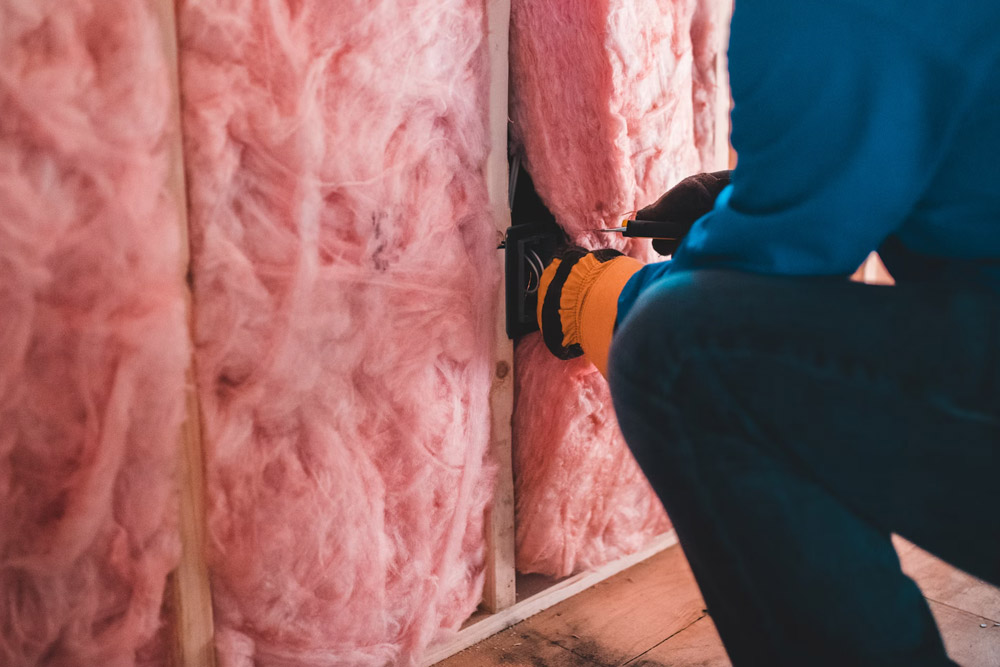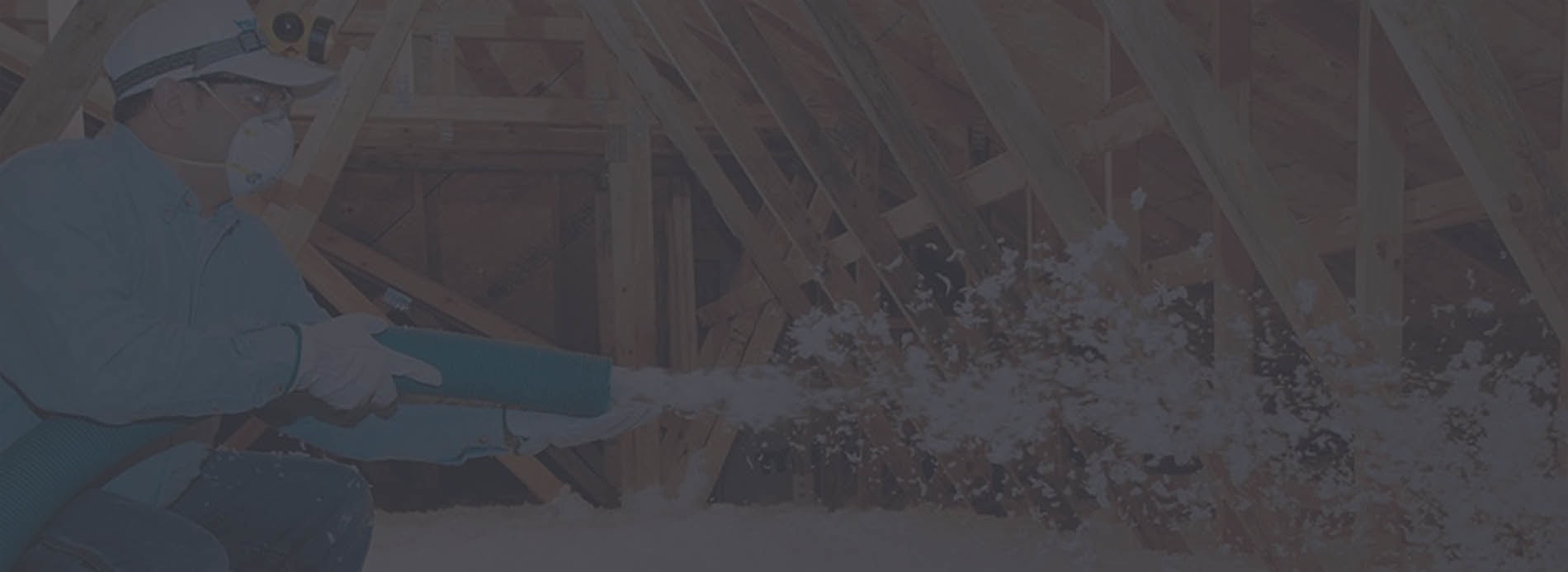
07 Feb Eco-Friendly Insulation Options for Your Home
Selecting the right eco-friendly insulation for Denver, Colorado homes could make all the difference in the search for more sustainable and economical insulation.
When assessing the various options, you also must consider the energy used in the manufacturing process. Preferably, you should choose materials that aren’t made with a lot of energy.
The Advantages of Eco-Friendly Insulation
- Eco-friendly insulation materials are usually compostable and recyclable
- The raw materials are adequately available
- During the manufacturing process, only a small amount of energy is needed
- The materials are safe for handling and non-irritating.
Numerous sustainable insulation materials are the best in preserving heat. They offer protection against excessive warmth, guaranteeing improved thermal comfort. The heat they collect is slowly discharged back into the house. Eco-friendly insulation materials can maintain their functionality while efficiently managing moisture.
The Importance of Home Insulation
Insulation is an excellent way of enhancing energy efficiency in your home. With suitable insulation, you can keep the heat inside during the winter months and the cool air during the summertime. Moreover, you can decrease your utility bill. Essentially, the insulation pays for itself within a few years.
Insulating your Denver home will create a more comfortable space throughout the year so you can enjoy a steady indoor temperature. It removes condensation on the ceilings and walls as well as decreases your carbon footprint.
Without top-quality insulation, Denver, Colorado homes will require an extra amount of energy to sustain a steady internal temperature. This could generate utility bills to increase rapidly and lead to a bigger amount of greenhouse gas emissions. It is projected that a badly insulated roof could be the reason for more than 25% of heat loss that happens in a home with the walls being blamable for an additional amount of heat loss if they lack proper insulation too.
Regardless of the sort of material used, guaranteeing a home has a sufficient amount of insulation is a good step toward boosting the environmental and energy efficiency effect of a structure. Improving energy needs by retaining more heat within a structure will, in turn, reduce the amount of greenhouse gas emissions discharged by a home.
With that being said, there are still numerous ways to make a house even more sustainable by picking eco-friendly insulation materials to provide a thermal barrier instead of using a heavyweight manufactured insulation material.
Eco-Friendly Insulation Options
Some eco-friendly insulation materials that are presently being offered for usage in homes include:
Sheep’s Wool
Sheep’s wool is not only fire retardant, but the material could keep your residence warm the same way it helps sheep endure freezing temperatures. Now, scientists have discovered how to use the insulating properties of sheep’s wool for home insulation. When you use sheep’s wool, you don’t need to adjust your cooling and heating unit frequently, saving you money and energy.
The normal sheep’s wool home insulating material is made using a small amount of polyester for added strength. Manufacturers can mold the material into various shapes for home insulation thanks to the inclusion of polyester.
Sheep’s wool is possibly the best material as far as eco-friendly insulation goes. It is totally renewable since shearing a sheep occurs at least once annually. This means the fleece will continuously grow back so the supply is always increasing.
You can also recycle sheep’s wool, cleaning and using it again. Furthermore, wool will absorb and release moisture without diminishing its thermal qualities. Say goodbye to mold and hello to a fresh home atmosphere.
Cellulose
Cellulose is made of recycled newsprint. Old newspapers, usually recycled into insulation, are either sprayed on attic floors or blown dry into the walls. Cellulose is quite easy to apply during a weekend.
At first, the material was believed to be combustible since lighting newspapers are one of the best methods of starting a fire. Fortunately, inventors created a natural treatment for cellulose insulation that makes it both fire-resistant and eco-friendly.
Recycled Materials
Made basically from post-consumer waste such as newspapers and plastic bottles recycled material insulation is an inventive way of transforming trash into treasure.
One key advantage of this insulation type is that it uses materials that would typically end up in a landfill. Converting recycled paper or denim into valuable insulation that can tightly fit into floors, walls, or attics. For the eco-friendly homeowner, it’s a solid situation for your home and the earth.
Icynene
One of the toughest home insulation green alternatives, Icynene is a spray foam made from castor oil that inflates over 90 times its volume when sprayed into a wall or ceiling. It is non-toxic and totally safe, bringing no harm to you. It is a 100% water-blown foam and does not contain any hazardous gases or chemicals. During the foaming procedure, Icynene locks in tiny air bubbles. When the foam cures, the air stays motionless.
Icynene stops drafts and leaks as well as buffering noise between the walls of a home. It is ensured to last for the lifetime of your home, making it a valuable investment. Insulating your home with Icynene increases its value.
You can return to your home in around two hours after Icynene insulation has been installed. This is why it works so well as house installation.
Aerogel
Frequently called the insulation material with “superpowers,” Aerogel possesses an R-value of 10.3 per inch, one of the highest ranking in the market. Aerogel basically contains over 85% air, but other materials could be used to make aerogels such as:
- Silica
- Copper
- Carbon
- Organic polymers
- Gold
- Iron oxide
These strong materials make up just under 5% of the volume of the aerogel. The remaining amount is filled with air. These traits make aerogel a low-density solid that is excellent for thermal insulation. Aerogel is great at holding water away and can shield insulation from water damage and corrosion. Heat has a difficult time passing through it, making it a good choice for insulation.
Aerogel has swiftly risen to fame in the home insulation industry. This formulated material provides some of the most effective thermal protection available. This distinctive molecular structure doesn’t leave much leeway for movement, making it impractical for gas-phase convection or conduction to happen.
Moreover, it has remarkably great water-repelling abilities and can stop moisture damage and corrosion from happening to the critical insulating parts of the material. Aerogel is very lightweight and generally sold as stickers or sheets, making installation simple and easy.
Cotton/Denim
Cotton is both natural, and renewable, and can be used as home insulation. To function as insulation, the fabric is folded into batts. Batts are pre-cut, flat pieces cut into four or eight inches and sold in bundles or rolls. Batts insulation resembles blankets.
Because this material is crafted from old denim, it helps to decrease the amount of waste put into landfills. Furthermore, you could recycle the insulation itself, and this is one advantage that separates denim from other materials. Denim also doesn’t have the hazardous gas formaldehyde. It also doesn’t trigger any respiratory problems and will aid with repelling insects in the home.
Denim and cotton are two insulation materials that frequently get outshined by the extremely scientific, technical materials that control the market. Denim and cotton insulation is typically always made from recycled materials. Recycled jeans and fabrics and jeans make this eco-friendly insulation one of the greenest materials on the market.
Cork
Cork is 100% natural and is deemed one of the eco-friendly options for home insulation. Cork is made from oak trees, using only the outer bark, and is recyclable. No trees need to be cut down. The bark is taken off while trees are still erect and are able to grow back. In actuality, cork oak trees soak up a good amount of carbon dioxide while their bark is growing back.
Once it is finished, cork possesses a negative carbon footprint, which is why it is considered the top green material for insulating houses.
Besides functioning as home insulation, cork can stop the growth of moisture and mold. It is also very sturdy and will never have to be replaced. There are several ways to use cork as home insulation including:
- Sprayed cork
- Sheets, boards, and panels
- Insulation rolls
All this makes cork an incredibly green option when choosing insulation.
Contact NetZero Insulation for All Your Insulation Needs
When it comes to home insulation, there is no wrong or right option. But there are several choices in the market with bad and good traits. Make sure you consider the advantages and disadvantages of each one to discover the one that works best for you and your Denver home.
Whether you want to improve your home’s insulation for sustainability, energy efficiency, or comfort, NetZero Installation is here to help. Our team of experts serves the Denver area and can give you a free quote. Call us today.


No Comments